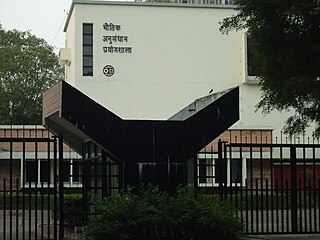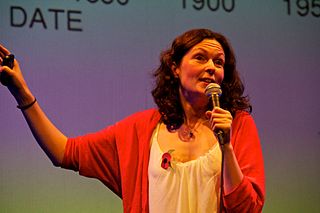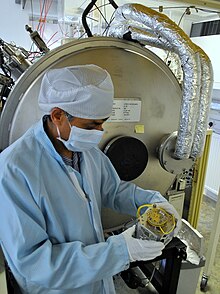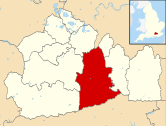
The following outline is provided as an overview and topical guide to space science:

Reuven Ramaty High Energy Solar Spectroscopic Imager was a NASA solar flare observatory. It was the sixth mission in the Small Explorer program (SMEX), selected in October 1997 and launched on 5 February 2002, at 20:58:12 UTC. Its primary mission was to explore the physics of particle acceleration and energy release in solar flares.

The Orbiting Astronomical Observatory (OAO) satellites were a series of four American space observatories launched by NASA between 1966 and 1972, managed by NASA Chief of Astronomy Nancy Grace Roman. These observatories, including the first successful space telescope, provided the first high-quality observations of many objects in ultraviolet light. Although two OAO missions were failures, the success of the other two increased awareness within the astronomical community of the benefits of space-based observations, and led to the instigation of the Hubble Space Telescope.

The Physical Research Laboratory is a National Research Institute for space and allied sciences, supported mainly by Department of Space, Government of India. This research laboratory has ongoing research programmes in astronomy and astrophysics, atmospheric sciences and aeronomy, planetary and geosciences, Earth sciences, Solar System studies and theoretical physics. It also manages the Udaipur Solar Observatory and Mount Abu InfraRed Observatory. The PRL is located in Ahmedabad.
Sir Robert Lewis Fullarton Boyd was a pioneer of British space science and founding director of the Mullard Space Science Laboratory.

The Lunar and Planetary Laboratory (LPL) is a research center for planetary science located in Tucson, Arizona. It is also a graduate school, constituting the Department of Planetary Sciences at the University of Arizona. LPL is one of the world's largest programs dedicated exclusively to planetary science in a university setting. The Lunar and Planetary Lab collection is held at the University of Arizona Special Collections Library.

Hinode, formerly Solar-B, is a Japan Aerospace Exploration Agency Solar mission with United States and United Kingdom collaboration. It is the follow-up to the Yohkoh (Solar-A) mission and it was launched on the final flight of the M-V rocket from Uchinoura Space Center, Japan on 22 September 2006 at 21:36 UTC. Initial orbit was perigee height 280 km, apogee height 686 km, inclination 98.3 degrees. Then the satellite maneuvered to the quasi-circular Sun-synchronous orbit over the day/night terminator, which allows near-continuous observation of the Sun. On 28 October 2006, the probe's instruments captured their first images.

The Russian Space Research Institute is the leading organization of the Russian Academy of Sciences on space exploration to benefit fundamental science. It was formerly known as the Space Research Institute of the USSR Academy of Sciences. It is usually known by the shorter name Space Research Institute and especially by the initialism IKI.

Christopher Graham Rapley is a British scientist and scientific administrator. He is Professor of Climate Science at University College London, a member of the Academia Europaea, Chair of the European Science Foundation's European Space Sciences Committee, Patron of the Surrey Climate Commission, a member of the scientific advisory board of Scientists Warning, a member of the UK Clean Growth Fund Advisory Board, and a member of the UK Parliamentary and Scientific Committee. His previous posts include Director of the Science Museum, London, Director of the British Antarctic Survey, Chairman of the London Climate Change Partnership, President of the Scientific Committee on Antarctic Research, Vice President of the European Science Foundation's European Polar Board, Executive Director of the International Geosphere-Biosphere Programme, and founder and leader of UCL Mullard Space Science Laboratory's (MSSL) Remote Sensing Group.

Interface Region Imaging Spectrograph (IRIS), also called Explorer 94 and SMEX-12, is a NASA solar observation satellite. The mission was funded through the Small Explorer program to investigate the physical conditions of the solar limb, particularly the interface region made up of the chromosphere and transition region. The spacecraft consists of a satellite bus and spectrometer built by the Lockheed Martin Solar and Astrophysics Laboratory (LMSAL), and a telescope provided by the Smithsonian Astrophysical Observatory (SAO). IRIS is operated by LMSAL and NASA's Ames Research Center.

Lucinda "Lucie" May Green is a British science communicator and solar physicist.

Louise Harra is a Northern Irish physicist, born in Lurgan, County Armagh, Northern Ireland. She is the Director of the World Radiation Centre of the Physical Meteorological Observatory in Davos (PMOD/WRC) and affiliated professor at the Institute of Particle Physics and Astrophysics of ETH Zurich.

Solar wind Magnetosphere Ionosphere Link Explorer (SMILE) is a planned joint venture mission between the European Space Agency and the Chinese Academy of Sciences. SMILE will image for the first time the magnetosphere of the Sun in soft X-rays and UV during up to 40 hours per orbit, improving our understanding of the dynamic interaction between the solar wind and Earth's magnetosphere. The prime science questions of the SMILE mission are

Athena Coustenis is an astrophysicist specializing in planetology. Dr. Coustenis, a French national, is director of research, Centre national de la recherche scientifique, at LESIA, at the Paris Observatory, Meudon. She is involved in several space mission projects for the European Space Agency (ESA) and for NASA. Her focus is on gas giant planets Saturn, Jupiter and their moons, and she is considered a foremost expert on Saturn's moon Titan.

The Miniature X-ray Solar Spectrometer (MinXSS) CubeSat was the first launched National Aeronautics and Space Administration Science Mission Directorate CubeSat with a science mission. It was designed, built, and operated primarily by students at the University of Colorado Boulder with professional mentorship and involvement from professors, scientists, and engineers in the Aerospace Engineering Sciences department and the Laboratory for Atmospheric and Space Physics, as well as Southwest Research Institute, NASA Goddard Space Flight Center, and the National Center for Atmospheric Research's High Altitude Observatory. The mission principal investigator is Dr. Thomas N. Woods and co-investigators are Dr. Amir Caspi, Dr. Phil Chamberlin, Dr. Andrew Jones, Rick Kohnert, Professor Xinlin Li, Professor Scott Palo, and Dr. Stanley Solomon. The student lead was Dr. James Paul Mason, who has since become a Co-I for the second flight model of MinXSS.
Lidia van Driel-Gesztelyi is a Hungarian solar scientist and professor of physics at the Mullard Space Science Laboratory of University College London. She also maintains affiliations with Solar and Stellar Activity Research Team at Konkoly Observatory of the Hungarian Academy of Sciences and the Space Research Laboratory (LESIA) of Paris Observatory. She has been Editor-in-Chief of the journal Solar Physics since 2005 and has served in leadership roles within the International Astronomical Union.
Sarah Anna Matthews is a British physicist. She is professor and head of solar physics at University College London's Mullard Space Science Laboratory (MSSL). She is also chairperson of UK Solar Physics.
Graziella Branduardi-Raymont was an Italian physicist. She was a professor at University College London's Mullard Space Science Laboratory (MSSL).















